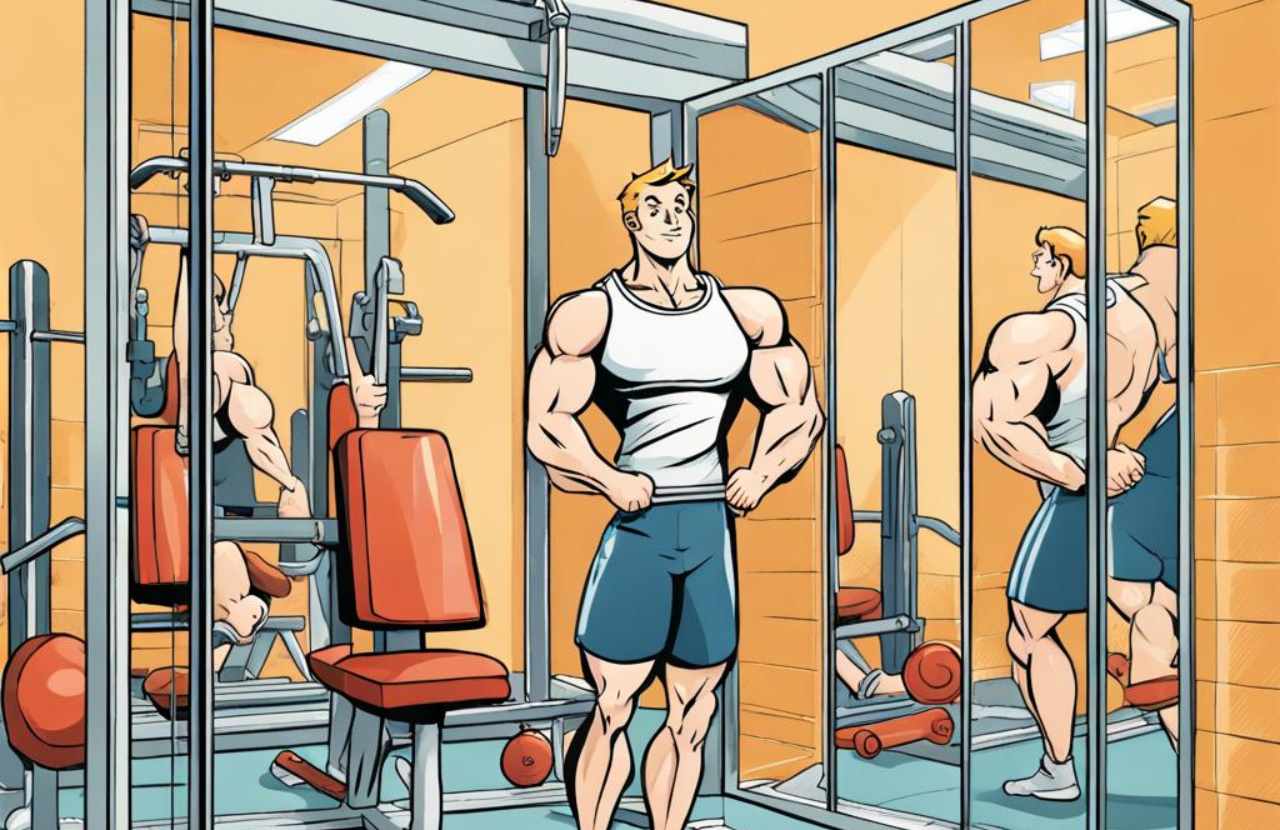Have you ever noticed that the mirrors at your gym don’t show an accurate reflection? Gym mirrors often appear slightly distorted, making you look taller, shorter, wider, or more muscular than you really are. This distortion is no accident.
Gym mirrors are specifically designed to be slightly distorted in order to be motivating. By altering body proportions, these clever mirrors boost gym-goers’ self-confidence so they feel encouraged to work out harder and come back more often. The subtle visual impact leads to very real impacts on gym attendance and retention.
So next time you check yourself out in the mirror mid-workout, remember it’s not showing an exact true reflection. But that may be the point. The distortion is intended to inspire, not deceive.
Why are Gym Mirrors Distorted?
Gym mirrors often appear distorted for a few main reasons:
- To make you look better
- Special lighting
- Angled glass
To Make You Look Better
Gyms want their members to feel good about themselves and their progress. So, they intentionally tilt and angle mirrors to minimize flaws and accentuate muscle definition. This makes your upper body look bigger and stronger while your lower body appears more toned and slimmed. The goal is to motivate members to keep coming back.
Special Lighting
Gyms tend to use soft, flattering lighting above their mirrors rather than harsh overhead lighting. This creates smooth skin, highlights muscles, and casts slimming shadows – all of which emphasize your best features. The lighting also makes the gym itself look brighter and more welcoming.
Angled Glass
The glass in gym mirrors is often tilted slightly towards you rather than being perfectly vertical. This angle reflects a distorted image that appears more muscular and lean. The thicker glass also resists warping over time better than a thin household mirror. So, you continue to see an idealized reflection each visit.
Are Gym Mirrors Fake?
Gym mirrors are often intentionally distorted or enhanced to make you look better than you actually do. Here is an excerpt from a blog post explaining why:
When you walk into almost any gym, you’ll notice the expansive wall-to-wall mirrors everywhere you look. At first glance, they seem like normal mirrors, accurately reflecting your body as you pump iron or run on the treadmill.
But don’t be fooled – those mirrors are likely distorting your appearance. Gyms intentionally use tricky mirrors to boost their members’ self-confidence and motivation to keep coming back. Here’s how they manipulate the mirrors:
Tilted Forward
Most gym mirrors tilt slightly forward rather than being perfectly vertical. This angle makes your reflection appear taller, leaner, and more muscular than reality.
Convex Shape
Subtly curving the mirror’s surface outward also slims and stretches the images shown. Some mirrors even only curve at key points like the waist.
Flattering Lighting
Gyms use diffuse lighting that hides flaws and makes skin look smooth and glowing. The lighting enhances muscle definition as well.
What is the Purpose of Tilting Gym Mirrors?
The main purpose of tilting gym mirrors is to create an optical illusion that makes gym members appear more muscular, toned, and leaner than they actually are.
- Tilting the mirrors slightly forward makes your upper body look bigger and stronger while your lower body appears more slimmed and toned. This is intended to boost motivation and self-confidence.
- The angle also accentuates muscle definition, makes faces look more chiseled, and creates an overall flattering effect.
- It’s a subtle tilt that leads to a small but effective change in appearance. Enough to make members look better without appearing obviously distorted.
- The goals are to inspire gym-goers to keep attending and working out, make the gym itself look more appealing, and reinforce members’ body image. Seeing an improved reflection helps convince people their hard work is paying off.
Final Words
In conclusion, gym mirrors are often intentionally distorted through angled glass, special lighting, and subtle convex shaping. The goal is to create a subtle optical illusion that makes gym members appear just a bit more toned, muscular, and leaner than they actually are. It’s not a major funhouse distortion but rather a slight tweak to minimally enhance reflection. This is done to boost motivation, self-confidence, and the likelihood that members will continue their gym subscriptions. So next time you check yourself out at the gym, remember the image may be an idealized version of yourself – but let it still push you to keep working hard!

